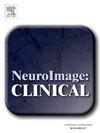Association of iron deposition in MS lesion with remyelination capacity using susceptibility source separation MRI
IF 3.4
2区 医学
Q2 NEUROIMAGING
引用次数: 0
Abstract
Objectives
Susceptibility source-separation (χ-separation) MRI provides in-vivo proxy of myelin (diamagnetic susceptibility, χdia) and iron concentrations (paramagnetic susceptibility, χpara) in the central nervous system, potentially uncovering myelin- and iron-related pathology in multiple sclerosis (MS) lesions (e.g., demyelination, remyelination, and iron-laden microglia/macrophages formation). This study aims to monitor longitudinal changes in χpara and χdia signals within MS lesions using χ-separation and evaluate the association between lesional iron and remyelination capability.
Methods
Fifty participants with MS (pwMS) were followed annually over a mean period of 3.3 years (SD = 1.8 years) with MRI, including χ-separation, and clinical assessments. To monitor lesions from their early stage (lesion age < 1 year), we identified newly-noted lesions (NNLs) and contrast-enhancing lesions (CELs), and tracked their longitudinal changes in χpara and χdia signals.
Results
Twenty-three pwMS were detected with NNLs and/or CELs (38 NNLs, 31 CELs;7 overlapped). Among these lesions (62 lesions in total), 27 exhibited χpara hyperintensity, termed hyper-paramagnetic sign (HPS), indicating iron deposition “throughout” the lesion (not confined to rim sign). Early-stage HPS correlated with future remyelination failure detected by χdia myelin signals (P < 0.001). After adjustment, lesions with early HPS demonstrated an annual loss in myelin signal (−1.94 ppb/year), whereas those without early HPS exhibited annual recovery (+0.66 ppb/year). Participants with confirmed disability improvement (CDI) had fewer HPS-positive lesions at baseline than those without CDI (P < 0.001).
Conclusion
The presence of HPS is associated with impaired remyelination capacity and a lack of disease improvement in pwMS. Identifying HPS may help demarcate lesions more amenable to myelin repair therapies.
利用易感源分离磁共振成像技术分析多发性硬化症病变中铁沉积与再髓鞘化能力的关系
本文章由计算机程序翻译,如有差异,请以英文原文为准。
求助全文
约1分钟内获得全文
求助全文
来源期刊

Neuroimage-Clinical
NEUROIMAGING-
CiteScore
7.50
自引率
4.80%
发文量
368
审稿时长
52 days
期刊介绍:
NeuroImage: Clinical, a journal of diseases, disorders and syndromes involving the Nervous System, provides a vehicle for communicating important advances in the study of abnormal structure-function relationships of the human nervous system based on imaging.
The focus of NeuroImage: Clinical is on defining changes to the brain associated with primary neurologic and psychiatric diseases and disorders of the nervous system as well as behavioral syndromes and developmental conditions. The main criterion for judging papers is the extent of scientific advancement in the understanding of the pathophysiologic mechanisms of diseases and disorders, in identification of functional models that link clinical signs and symptoms with brain function and in the creation of image based tools applicable to a broad range of clinical needs including diagnosis, monitoring and tracking of illness, predicting therapeutic response and development of new treatments. Papers dealing with structure and function in animal models will also be considered if they reveal mechanisms that can be readily translated to human conditions.
 求助内容:
求助内容: 应助结果提醒方式:
应助结果提醒方式:


